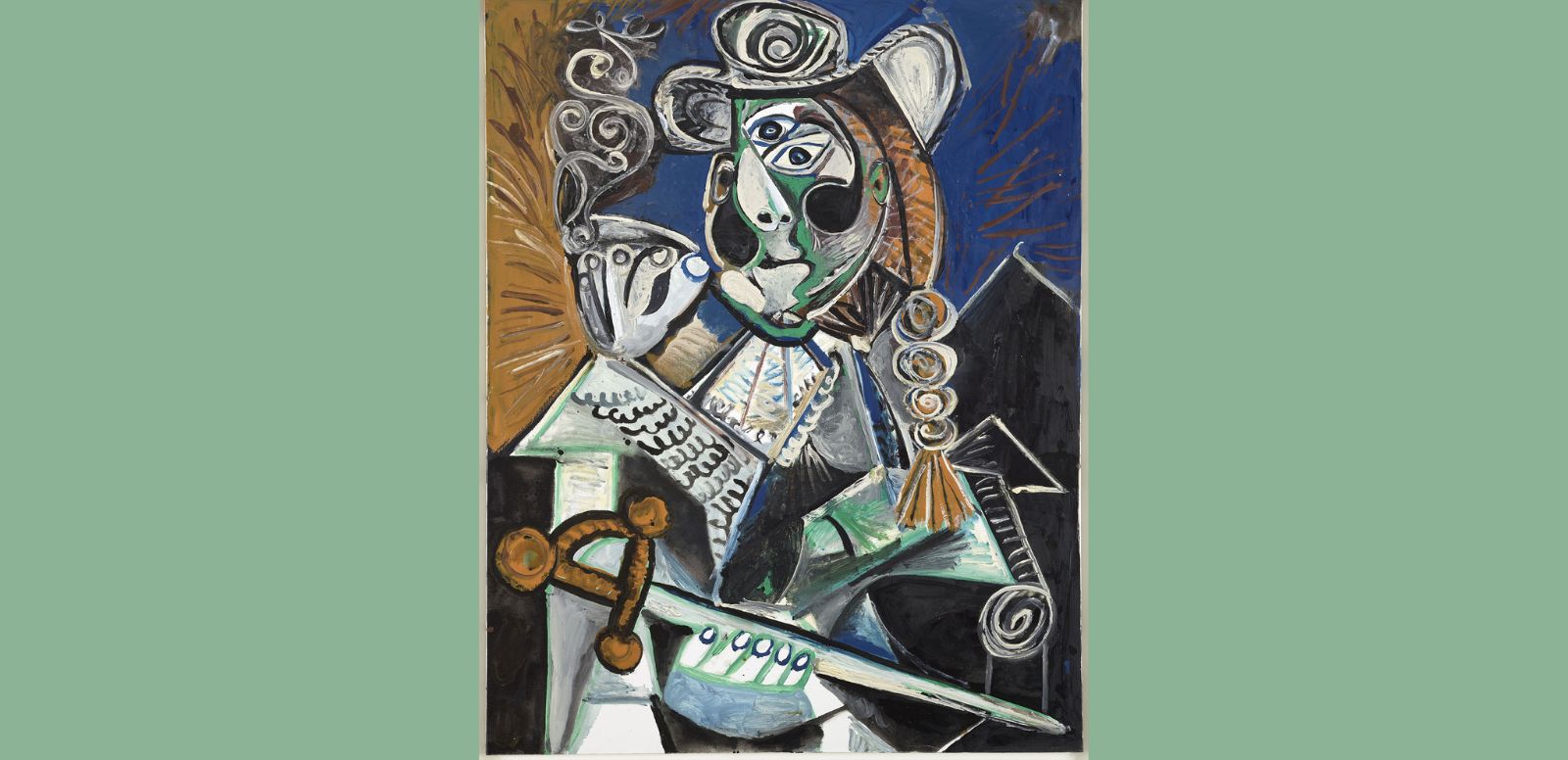
Donación Pablo Picasso, 1979.
© Sucesión Picasso, VEGAP, Madrid, 2023
The work Le Matador was created in 1970. The piece is an example of Picasso's commitment to the tradition of bullfighting art, which can be traced back to bullfighting, the artistic representation of bullfighting in Spain. It can also be seen how Picasso has the ability to reinterpret and present certain forms in innovative and captivating ways. This shows how his surroundings influenced his work, and how his style adapted as his personal life evolved.
The painting depicts a bullfighter dressed in a bullfighter's costume, holding his cape and sword in one hand and a bouquet of flowers in the other. The figure of the matador is depicted with straight, angular lines, typical of the Cubist style.
It also reflects Picasso's innovative technique, which combines elements of Cubism with a more expressive technique. The image is broken down into geometric shapes, but at the same time the brushstroke is rapid and loose, creating a sense of movement and dynamism in the work. The combination of warm colours and earth tones in the work creates a vibrant and exciting atmosphere, evoking the passion and intensity of bullfighting.
Le Matador is normally in the permanent collection of the Musée Picasso Paris and has been exhibited in various contemporary art exhibitions around the world. It is currently on display at the Musée Picasso in Antibes as part of the exhibition Picasso 1969-1972: End of the Beginning.
Sources:
"Le Matador, Mougins (1970)" en el sitio web oficial del Museo Picasso de París.

